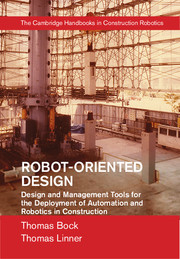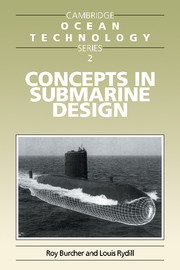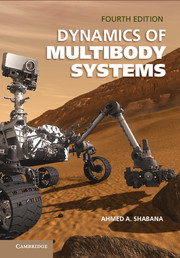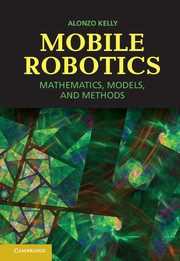Refine search
Actions for selected content:
2002 results in Engineering design, kinematics, and robotics
1 - Advanced Construction and Building Technology
-
- Book:
- Robot-Oriented Design
- Published online:
- 05 May 2015
- Print publication:
- 05 May 2015, pp 1-17
-
- Chapter
-
- You have access
- HTML
- Export citation
Copyright page
-
- Book:
- Robot-Oriented Design
- Published online:
- 05 May 2015
- Print publication:
- 05 May 2015, pp iv-iv
-
- Chapter
- Export citation

Robot-Oriented Design
- Design and Management Tools for the Deployment of Automation and Robotics in Construction
-
- Published online:
- 05 May 2015
- Print publication:
- 05 May 2015
Contents
-
- Book:
- Robot-Oriented Design
- Published online:
- 05 May 2015
- Print publication:
- 05 May 2015, pp v-viii
-
- Chapter
- Export citation
6 - Synchronization of Organization, Building Structure, and Manufacturing Technology by Robot-Oriented Design
-
- Book:
- Robot-Oriented Design
- Published online:
- 05 May 2015
- Print publication:
- 05 May 2015, pp 156-230
-
- Chapter
- Export citation
Robot-Oriented Design - Half title page
-
- Book:
- Robot-Oriented Design
- Published online:
- 05 May 2015
- Print publication:
- 05 May 2015, pp i-ii
-
- Chapter
- Export citation
Acknowledgements
-
- Book:
- Robot-Oriented Design
- Published online:
- 05 May 2015
- Print publication:
- 05 May 2015, pp ix-xii
-
- Chapter
- Export citation
Index
-
- Book:
- Robot-Oriented Design
- Published online:
- 05 May 2015
- Print publication:
- 05 May 2015, pp 275-283
-
- Chapter
- Export citation
Robot-Oriented Design - Title page
-
-
- Book:
- Robot-Oriented Design
- Published online:
- 05 May 2015
- Print publication:
- 05 May 2015, pp iii-iii
-
- Chapter
- Export citation

Concepts in Submarine Design
-
- Published online:
- 05 July 2014
- Print publication:
- 28 January 1994

Dynamics of Multibody Systems
-
- Published online:
- 05 June 2014
- Print publication:
- 02 September 2013

Mobile Robotics
- Mathematics, Models, and Methods
-
- Published online:
- 05 June 2014
- Print publication:
- 11 November 2013
Chapter 10 - Motion Planning
-
- Book:
- Mobile Robotics
- Published online:
- 05 June 2014
- Print publication:
- 11 November 2013, pp 640-690
-
- Chapter
- Export citation
Chapter 1 - Introduction
-
- Book:
- Mobile Robotics
- Published online:
- 05 June 2014
- Print publication:
- 11 November 2013, pp 1-11
-
- Chapter
- Export citation
Preface
-
- Book:
- Mobile Robotics
- Published online:
- 05 June 2014
- Print publication:
- 11 November 2013, pp xiii-xiv
-
- Chapter
- Export citation
Chapter 3 - Numerical Methods
-
- Book:
- Mobile Robotics
- Published online:
- 05 June 2014
- Print publication:
- 11 November 2013, pp 116-172
-
- Chapter
- Export citation
Chapter 4 - Dynamics
-
- Book:
- Mobile Robotics
- Published online:
- 05 June 2014
- Print publication:
- 11 November 2013, pp 173-269
-
- Chapter
- Export citation
Chapter 7 - Control
-
- Book:
- Mobile Robotics
- Published online:
- 05 June 2014
- Print publication:
- 11 November 2013, pp 435-513
-
- Chapter
- Export citation
Contents
-
- Book:
- Mobile Robotics
- Published online:
- 05 June 2014
- Print publication:
- 11 November 2013, pp v-xii
-
- Chapter
- Export citation
Chapter 9 - Localization and Mapping
-
- Book:
- Mobile Robotics
- Published online:
- 05 June 2014
- Print publication:
- 11 November 2013, pp 579-639
-
- Chapter
- Export citation
